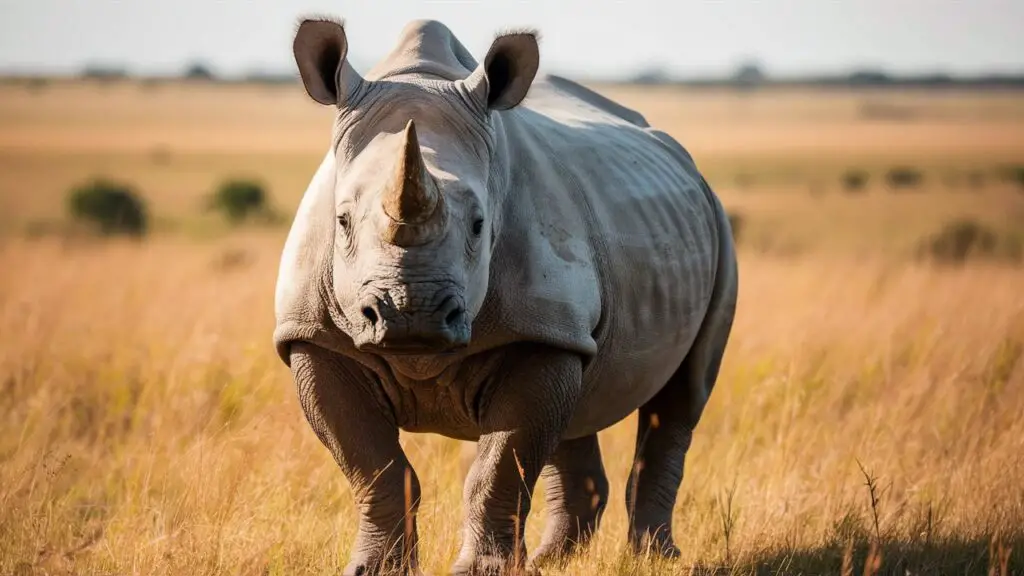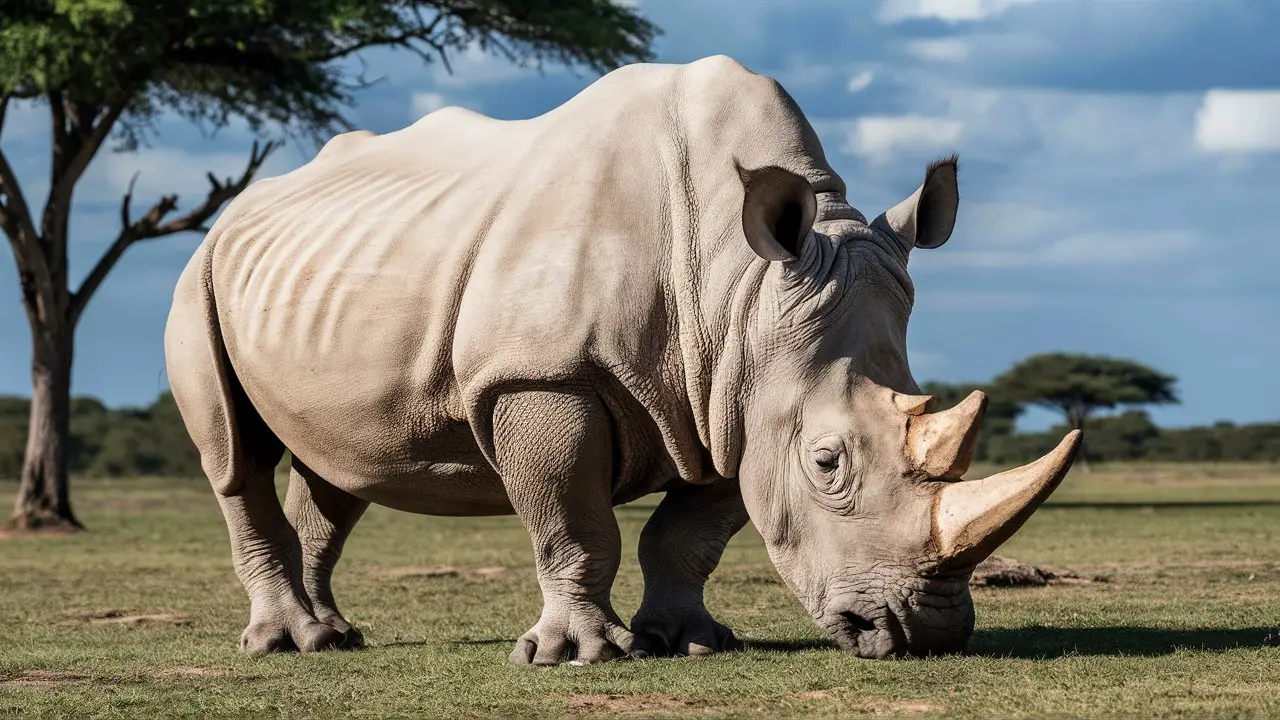As the northern white rhinoceros faces extinction, you feel an acute urgency to act. With only two individuals left in the world, the fate of this subspecies rests in your hands. Though the challenges seem insurmountable, you must not lose hope. Bold, creative interventions may yet turn the tide. You have the power to save these iconic animals from vanishing forever. But you must act decisively and swiftly, marshalling resources and galvanizing public support. The clock is ticking down on this ancient lineage. Will you answer the call and lead the charge to bring the northern white rhinoceros back from the brink? The responsibility falls to you.
The Plight of the Northern White Rhinoceros
Population Decline and Poaching
The northern white rhinoceros population has declined by over 97% due to poaching and habitat loss. At the start of the 20th century, there were over 2,000 northern white rhinos in central Africa. However, their numbers were decimated due to poaching for their horns, which are highly prized in traditional Asian medicine. Despite conservation efforts, the population dropped to only 15 by 1984. Tragically, the last male northern white rhino died in 2018, leaving only two females left in the world.
Conservation Efforts
In a last ditch effort to save the species, an international team of scientists and conservationists have undertaken an ambitious plan to use in vitro fertilization (IVF) techniques to produce northern white rhino embryos and eventually calves. In 2019, they were able to successfully produce two northern white rhino embryos, which have been frozen for implantation into southern white rhino surrogate mothers. If successful, this would be the first time IVF is used to bring a rhino species back from the brink of extinction.
While this gives hope that the northern white rhino may avoid extinction, their long term survival still remains uncertain given the small population size and risks associated with captive breeding programs. Continued anti-poaching efforts, habitat protection, and raising public awareness about the plight of rhinos are critical to ensuring the northern white rhino and other rhino species survive for generations to come. By supporting rhino conservation organizations, individuals can play an important role in helping protect these magnificent animals.
Why the Northern White Rhinoceros Is Critically Endangered
The Northern white rhino is considered critically endangered, with only two individuals left in the world. Their numbers have declined dramatically due to poaching and habitat loss.
Poaching for Rhino Horn
The Northern white rhino has been poached extensively for its horn, which is valued in traditional Asian medicine. Although rhino horn is made of keratin, the same substance as human fingernails, it is seen as a cure for various ailments and an aphrodisiac, making rhino horn highly prized on the black market. At the height of poaching in the 1980s, the population of Northern white rhinos declined from around 500 individuals to just 15 in 2015. Despite conservation efforts, poaching remains the primary threat to the species.
Loss and Fragmentation of Habitat
The Northern white rhino’s native habitat has declined more than 95% due to human activity like farming, logging, and road construction. The small, isolated populations have limited genetic diversity and breeding potential. As their habitat has fragmented into smaller pockets, it has become difficult for Northern white rhinos to find each other and breed. Larger connected habitats are essential for maintaining viable populations of this wide-ranging species.
Intensive Conservation Efforts Underway
Intensive conservation efforts are underway to save the Northern white rhino from extinction, including armed guards, enhanced monitoring, and moving individuals to protected sanctuaries. However, with only two individuals left, the species’ survival remains uncertain without advanced reproductive technologies like in vitro fertilization using stored genetic material. Raising awareness and reducing demand for rhino horn are also critical to end poaching and protect remaining populations. Though the situation is dire, hope remains that with a concerted global effort, this magnificent species can be brought back from the brink.

Efforts to Save the Northern White Rhinoceros From Extinction
Habitat Protection and Breeding Programs
Protecting the remaining northern white rhinos and their habitat is critical to saving the species. Heavy poaching for their horns has decimated populations, leaving only two females left in the wild. Conservation organizations have established sanctuaries and breeding programs to protect and breed the remaining rhinos in captivity. The Ol Pejeta Conservancy in Kenya is home to the only two remaining northern white rhinos and has had some success with breeding them in protected enclosures.
Advanced Reproductive Technologies
With so few northern white rhinos left, breeding them naturally is difficult and time intensive. Scientists are working to use advanced reproductive technologies, like in vitro fertilization (IVF) and artificial insemination to produce northern white rhino embryos and calves. In 2019, researchers were able to create two northern white rhino embryos using IVF, though they have not yet been implanted in a surrogate mother. Using frozen sperm and eggs from now-deceased rhinos could help introduce much-needed genetic diversity that may help the species recover.
Public Support and Fundraising
Saving an entire species from extinction is a costly endeavor that requires public support. Conservation organizations are working to raise awareness about the plight of the northern white rhino to gain public support and funding for protection and breeding programs. Private donors and organizations have contributed millions of dollars to help fund rhino sanctuaries, breeding programs, and advanced reproductive technologies. Continued support and funding will be necessary to bring the northern white rhino back from the brink of extinction.
With intensive conservation efforts focused on habitat protection, breeding, and new reproductive technologies, there is hope that the northern white rhino may avoid extinction. However, the remaining challenges are daunting, and success is not guaranteed without continued public support for this critically endangered species. Protecting the northern white rhino highlights the importance of conservation and the impacts of poaching and habitat loss on vulnerable wildlife populations worldwide.
The Importance of Preserving the Northern White Rhinoceros
Raising Awareness of Endangered Species Protection
The northern white rhinoceros is one of the most endangered species on the planet, with only two individuals left in the world. Protecting and preserving this species is vital to raising awareness of wildlife conservation and endangered species protection. Successfully saving the northern white rhino from extinction would be a symbolic triumph demonstrating what humanity can accomplish when we come together to protect vulnerable animals and their habitats.
Maintaining Biodiversity
The loss of any species results in a reduction of biodiversity on Earth. White rhinos play an important role in the ecosystems they inhabit, dispersing seeds, clearing brush, and providing food for other wildlife. If the northern white rhino goes extinct, these ecosystems would be impacted in unforeseen ways. Protecting biodiversity, even for a single species, is crucial for the overall health and sustainability of the planet.
Responsibility as Stewards of Wildlife
As the dominant species on Earth, humans have a moral responsibility to protect vulnerable wildlife and the environments on which they depend. Allowing a species as iconic as the northern white rhino to go extinct due to poaching and habitat loss would signal a failure in that responsibility. Preserving this species, even with a captive breeding and re-wilding program, reminds us of the duty we have as stewards of the natural world to defend animals that cannot protect themselves.
Opportunity for Advancements in Conservation Technology
The effort to save the northern white rhino is pushing the boundaries of wildlife conservation technology, like artificial insemination and stem cell research. Reproductive technologies developed to breed the northern white rhino could be applied to other endangered species. Robotic technologies used to monitor the health of the remaining two rhinos could improve the care of captive animals. Advancements made through this conservation project could have far-reaching impacts on endangered species preservation overall.
Saving the northern white rhino is a symbolic, ethical, and technological imperative. Protecting this species and its habitat demonstrates humanity’s capacity for compassion and our progress in defending biodiversity. With a collaborative global effort, groundbreaking advancements in conservation technology, and a shared sense of responsibility as stewards of the natural world, we can rescue this remarkable animal from the brink of extinction. Our planet would be richer for their survival.
Northern White Rhinoceros FAQs: Your Most Pressing Questions Answered
How Many Northern White Rhinos Are Left in the World?
As of 2021, there are only two northern white rhinos left in the world, both of which are female. The last male northern white rhino, Sudan, passed away in 2018. This subspecies of rhino has been pushed to the brink of extinction due to poaching and loss of habitat. Intensive conservation efforts are underway to try and save the northern white rhino from extinction through in vitro fertilization and embryo transfer into surrogate southern white rhino females.
What Do Northern White Rhinos Eat?
Northern white rhinos are herbivores that consume a variety of grasses and leaves. Their diet consists primarily of coarse grasses, foliage, branches, and shrubs. An adult northern white rhino can eat up to 50 kilograms of food per day. They use their broad lips to grasp food and their molars to grind and chew plants. Northern white rhinos obtain most of the water they need from the plants they consume, but will drink from watering holes or wallows when available.
Where Do Northern White Rhinos Live?
Northern white rhinos once roamed the grasslands and savannas of central Africa, ranging across Chad, Sudan, Uganda, and the Democratic Republic of Congo. However, their numbers have been decimated due to poaching and loss of habitat. The last two remaining northern white rhinos live in a conservancy in Kenya under 24-hour armed guard. The species is considered extinct in the wild. There were attempts to establish a breeding program for northern white rhinos in zoos, but they were mostly unsuccessful due to the rhinos’ low breeding rates in captivity.
What Distinguishes the Northern White Rhino From Other Rhino Species?
The northern white rhino is the largest of the rhino species. It has a long skull, a square muzzle, and distinctive large folds of skin around its neck. Adult males can weigh up to 4,000 kilograms. The northern white rhino differs from other rhino species in that it has only two horns, while most have three. Its horns are also slightly shorter and less curved. Sadly, its horns have made the northern white rhino a prime target for poachers looking to sell rhino horn on the black market. Urgent action is needed to prevent this magnificent animal from disappearing forever.
Don’t Miss a Thing! Enhance Your Wildlife Photography with Ultra-X Night Vision Goggles.
GET NOW!

Conclusion
You have the power to help save the northern white rhinoceros from extinction. While the situation is dire, hope remains. By raising awareness, donating to conservation groups, supporting anti-poaching efforts, and pressuring policymakers, your actions can make a difference. Though the journey will not be easy, every small contribution helps this species cling to survival a little longer. The fate of the northern white rhinoceros ultimately lies in our hands. Will we work together to preserve these iconic creatures, or stand idly by as they disappear from the wild forever? The choice is ours.





